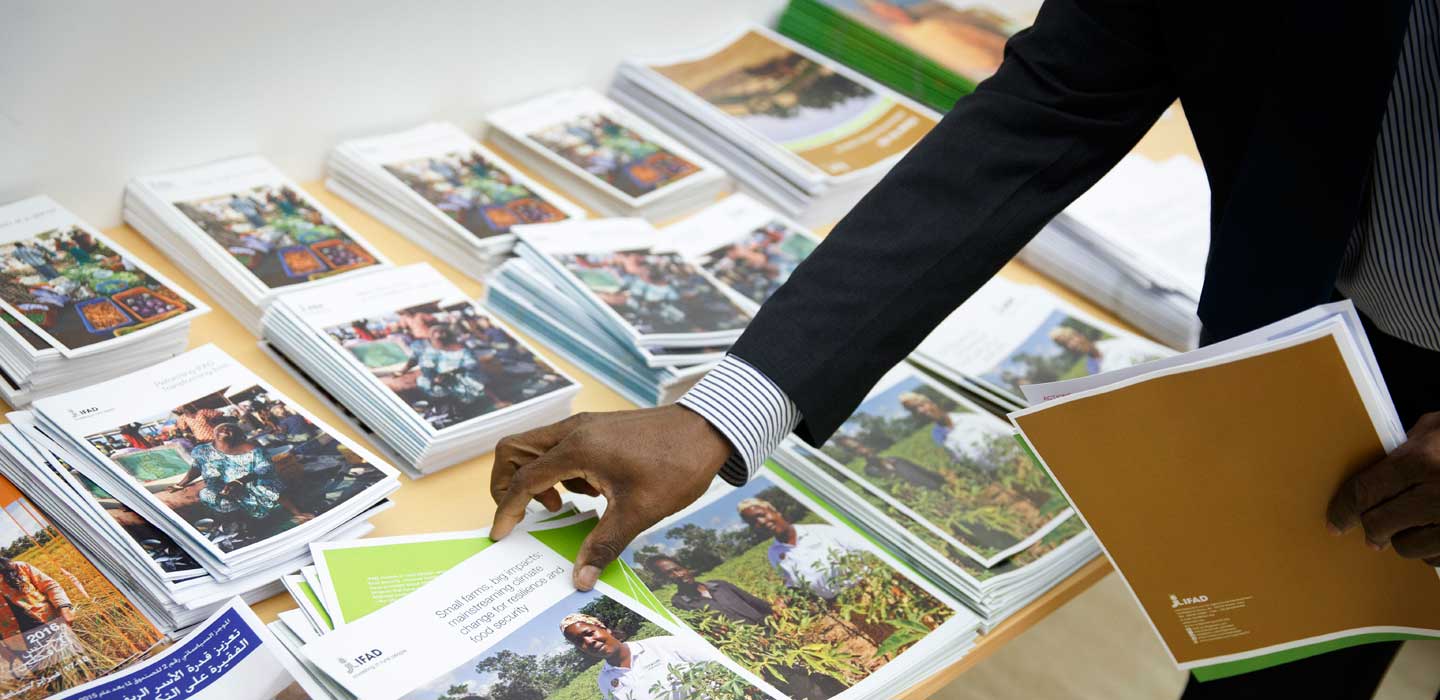Fiches d'information

Fiches d'informations
Menu Affichage
SearchResultsFilters
Résultats de recherche
Securing land and natural resouce rights through business partnerships between small-scale farmers and investors
IFAD and UN-Habitat, through the Global Land Tool Network (GLTN), have entered into a partnership to implement the ‘Land and Natural Resources Learning Initiative for Eastern and Southern Africa (TSLI-ESA)’.
The initiative aims to improve knowledge management strategies and approaches towards pro-poor and gender-sensitive land and natural resource tenure rights in selected East and Southern African countries
Land and natural resources in Swaziland
IFAD and UN-Habitat, through the Global Land Tool Network (GLTN), have entered into a partnership to implement the „Land and Natural Resources Learning Initiative for Eastern and Southern Africa (TSLI-ESA)‟.
The initiative aims to improve knowledge management strategies and approaches towards pro-poor and gender-sensitive land and natural resource tenure rights in selected East and Southern African countries.
Land and Natural Resources Tenure Security Learning Initiative for East and Southern Africa
This report provides an overview of the achievements and learning from the Phase 1 of the Tenure Security Learning Initiative - East & Southern Africa (TSLI-ESA) Project.
It also looks ahead to strategies for scaling up initiatives, and to the second phase of the TSLI-ESA project.
Mapping land and natural resource rights, use and management
Participatory mapping uses a range of tools including data collection tools, such as mental mapping, ground mapping, participatory sketch mapping, transect mapping and participatory 3-dimensional modelling.
Recently participatory mapping initiatives have begun to use more technically advanced geographic information technologies, including Global Positioning Systems (GPS), aerial photos and use of remote-sensing images, Geographic Information Systems (GIS) and other digital computer-based technologies.
IFAD supported projects and programmes are increasingly making use of these technologies for mapping land and natural resource rights, use and management.
Enabling poor people to overcome poverty in Guatemal
IFAD has supported rural poverty reduction and agricultural development initiatives in the Republic of Guatemala since 1986. During its first decade in the country, IFAD’s work was oriented towards supporting the government in consolidating the peace process and rebuilding the social fabric in zones that were affected by Guatemala’s 36-year armed conflict.
It also focused on constructing an economic and institutional platform for the development of marginalized rural and indigenous communities.
Over the years, IFAD operations have evolved from localized rural development.
Experiencias del FIDA sobre escalonamiento en Perú, Estudio de caso y esquema analítico
Perspectives de la sécurité alimentaire et nutritionnelle à l’échelle planétaire
années, le monde a été touché par
une série de crises économiques,
financières et alimentaires qui ont
ralenti, et parfois contrarié, les
efforts mondiaux pour réduire la
pauvreté et la faim. Aujourd’hui, la
volatilité des prix et les chocs
climatiques – telle la sécheresse
dévastatrice qui a récemment
frappé la Corne de l’Afrique –
continuent à compromettre
gravement ces efforts. Dans ce
contexte, promouvoir l’adaptation
des moyens de subsistance ainsi
que la sécurité alimentaire et
nutritionnelle est devenu la priorité
des programmes gouvernementaux.
Pour être opérants, ces
programmes doivent placer les
petits exploitants agricoles au centre
de l’action et leur faire jouer un rôle
de premier plan dans les efforts
d’investissement requis.
Investing in rural people in Burundi
À ce jour, le FIDA a financé neuf programmes et projets au Burundi pour un montant total de 141 millions de dollars. Cette expérience dans le pays confirme que, même dans l’adversité, des programmes et projets conçus sur la base de consultations adéquates avec les communautés rurales peuvent améliorer la sécurité alimentaire des ménages.
Pendant les onze années qu’a duré le conflit armé dans le pays, le FIDA n’a jamais interrompu ses programmes et activités. En accomplissant son mandat en faveur du développement rural et agricole, l’organisation a permis de maintenir la cohésion sociale des communautés rurales qui ont été, directement ou indirectement, victimes de massacres et de combats. En restant dans le pays, malgré l’insécurité et les contraintes de l’embargo international à l’encontre du Burundi, le FIDA a également favorisé le maintien d’un sentiment de normalité parmi la population.
Enabling poor rural to overcome poverty in Yemen
IFAD is currently one of the two largest donors supporting Yemen’s rural agricultural sector. IFAD has worked in Yemen since the Fund’s creation, and has acquired a wealth of experience and knowledge of the economy and society, and developed a wide network of partners in the country. IFAD’s goal in Yemen is to achieve improved, diversified and sustainable livelihoods for poor rural women, men and young people, especially those who depend on rainfed agriculture and livestock production systems in the poorest areas.
IFAD has three main strategic objectives in Yemen:
• empowering rural communities by strengthening partnerships with civil society organizations and using community-driven approaches so that poor rural people can manage local community development activities;
• promoting sustainable rural financial services and pro-poor rural enterprises by developing savings and credit associations for disadvantaged groups in remote rural areas and developing rural enterprises that provide jobs for the unemployed, especially young people and women;
• enhancing food security for poor households by restoring the productive agricultural base and improving productivity so that poor households can produce enough for household needs and a surplus that can be sold.